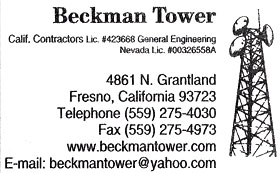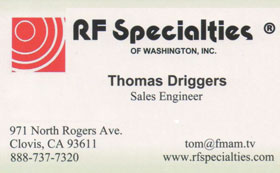Loud Commercials
Federal Communications Commission (FCC or Commission) rules will soon require commercials to have the same average volume as the programs they accompany. In the Commercial Advertisement Loudness Mitigation (CALM) Act, Congress directed the FCC to establish these rules, and they will go into effect on December 13, 2012.
Quick Facts
Q: Does the FCC currently regulate loud commercials?
A: The Commission adopted rules on December 13, 2011 that will require commercials to have the same average volume as the programs they accompany. The rules will become effective on December 13, 2012, 1 year after the date of their adoption. This gives broadcast television stations and pay TV providers until this date to be in full compliance.
Q: What does the CALM Act require the FCC to do?
A: Specifically, the CALM Act directs the Commission to establish rules that require TV stations, cable operators, satellite TV providers or other multichannel video program distributors (MVPDs) to apply the Advanced Television Systems Committee’s (ATSC) A/85 Recommended Practice (“ATSC A/85 RP”) to commercial advertisements they transmit to viewers.
Q: What is the ATSC A/85 Recommended Practice?
A: The ATSC A/85 RP is a set of methods to measure and control the audio loudness of digital programming, including commercials. This standard can be used by all broadcast television stations and pay TV providers.
Q: When did the FCC have to adopt rules and when do these rules take effect?
A: The Commission was required to adopt rules within one year of the law’s enactment, and did so on December 13, 2011. The Commission’s rules become effective one year after their adoption, or December 13, 2012.
Q: Are there any exceptions to the compliance date?
A: Yes. A one-year waiver of the effective date of the rules may be granted by the Commission to any TV station, cable operator or other MVPD that shows financial hardship in obtaining the equipment to comply with the new law. The Commission has authority to renew the waiver for one additional year.
Q: What can I do about loud commercials until the new rules take effect?
A: Manually controlling volume levels with the remote control remains the simplest way to reduce excessive loudness levels. The “mute” button on your TV remote is also useful to control excessively loud audio. In addition, many televisions have circuits that stabilize volume differences between programs and commercials. These functions usually need to be “enabled” or turned on through the television receiver’s “set up/audio” menu. In “high-end” equipment, such as home theater systems, some automatic devices may also help. They include:
- Automatic Gain Control (AGC) Circuits – raises the audio level if it is too low and decreases it if it is too high.
- Audio Compressors – tones down loud sounds. Compressors can be adjusted to eliminate many of the negative effects of loudness.
- Limiters and Peak Limiters – keeps the audio level from exceeding a pre-determined level. Peak limiters are the simplest, least intrusive of all the automatic level control devices, but can introduce considerable distortion.
- Audio Expanders – increases the range of sound. An expander can restore sound to its normal range and also reduces noticeable background noise.
- Audio Filters – “screens out” specific audio frequencies.
Tell Us About Loud Commercials
While the new loudness rules take effect December 13, 2012, we encourage you to report commercials that seem louder than the programming they accompany to the FCC at any time. This information will help identify possible problem areas and will assist the Commission in evaluating the efficiency of the rules once they go into effect.
Filing a Complaint
When sending your complaint to the Commission, please include the time, channel, a description of the commercial, whether you are watching pay TV or broadcast television using an antenna, and your contact information. You can file your complaint with the FCC’s Consumer Call Center at 1-888-CALL-FCC (1-888-225-5322) voice or 1-888-TELL-FCC (1-888-835-5322). Your complaint can also be faxed to 1-866-418-0232, or mailed to:
Federal Communications Commission
Consumer & Governmental Affairs Bureau
Consumer Inquiries & Complaints Division
445 12th Street, SW
Washington, DC 20554


